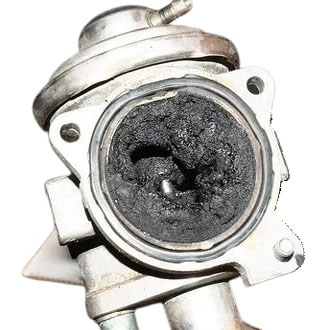EGR Valve Problems.
What is an EGR Valve?
An EGR(Exhaust Gas Re-circulation) Valve regulates the volume of exhaust output, re-circulated back to the air intake.
The re-circulation has 2 main objectives:
1) Re-burn of gases at a lower temperature to increase engine efficiency, and hence better fuel consumption.
2) Doing so lowers exhaust emissions, especially Nitrogen Oxide.
At engine start-up the EGR Valve is closed off.
At idle or low speeds (less oxygen required for combustion), the valve is open wide.
During heavy acceleration and power delivery, the EGR Valve shuts.
And this lets more oxygen-rich gases to enter the engine cylinders, for more powerful combustion.
So having an EGR Valve working in a correct manner, is important for engine power, the environment and the Turbocharger.
And please DO NOT have the EGR Valve blanked off.
Blocking the EGR Valve causes more trouble than it’s worth in the long run.
You void warranty on the vehicle, sub-components such as Turbochargers, and it breaks emission laws.
So please be kind to the environment at the very least.
Typical EGR Valve Problems

The most common EGR Valve Problems are excessive ‘coking’.
Coking is the result of excessive carbon build up.
Excess carbon can limit the Valves response to the ECU, and at worse, choke the entire Valve.
Excess carbon also gets deposited in the turbine housing of the Turbocharger.
And into the VNT assembly, including the Nozzle Ring and the Vanes (more crucially), making the actuator work harder to move the VNT components.
Eventually the excess carbon completely jams the vanes, and the actuator is usually damaged at the same time (from working against the resistance).
Another problem is an electrical wiring fault, or a fault with the ECU.
Typical Symptoms of EGR Valve Problems
If EGR Valve remains CLOSED:
Poor fuel efficiency with increased consumption.
Poor or variable engine idle.
ECL illuminated on dash with ECU code indicating EGR problems.
IF EGR Valve remains OPEN:
Excessive back-pressure in exhaust system (also see DPF below).
Leading to Turbocharger oil leaks.
For more information on Turbocharger Oil Leaks click here.
MAF sensor faults (try cleaning the MAF sensor first – cheap and easy).
How to fix Issues with EGR Valves
First have the wiring circuits checked for resistance and damage or loose connections.
Have the EGR Valve thoroughly cleaned.
If you are installing a new Turbocharger, this is the ideal time to have the EGR Valve cleaned.
At the same time, you should have the manifold cleaned.
Because a faulty EGR (and resultant faulty Turbocharger), may have deposited excess carbon throughout the exhaust system.
And just to make sure of the cause, have the injectors and seats checked, to make sure they are not the source or contributing to ‘incorrect combustion’.
Which leads us to DPF Problems, another potential failure point in the exhaust system chain.
Hopefully the above guide on EGR Valve Problems, has helped you in some way.
If you have any other query on our Turbochargers and Parts, please contact our sales support on: 0490 059 316.
